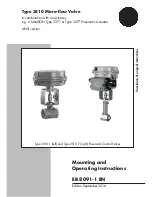
TC1796
Peripheral Units (Vol. 2 of 2)
Controller Area Network (MultiCAN) Controller
User’s Manual
22-141
V2.0, 2007-07
MultiCAN, V2.0
Note: The BCE determines the end of the scheduler entries in the scheduler memory
when the system is normally synchronized. When the time mark of this entry is
reached, the TTCAN node will automatically enter the Configuration Mode. It will
continue with the first time mark when a reference message has been correctly
transferred on the CAN bus.
While the system is in the synchronization state, a BCE entry with GM = 1 is also taken
into account.
22.6.2.3 End of Scheduler Memory Entry
The end of scheduler memory entry EOS is defined by entry codes EC = 0000
B
or
EC = 1XXX
B
(see
). An EOS immediately stops the reading of entries in the
scheduler memory and sets the TTCAN node into Configuration Mode.
EOS can be regarded as a kind of emergency stop entry. It should not be used to control
the scheduler itself but represents a security mechanism for the case that a scheduler
entry does not show a valid EC bit field.
GM
27
rw
Gap Mode
This bit determines how the scheduler proceeds
when the TTCAN node is “in a gap” and waits for a
trigger event to send the reference message (for the
current time master) or when it waits for the reception
of a reference message.
0
B
The watch trigger event will be generated
according to this BCE entry (without
respecting a possible gap).
1
B
If the TTCAN node is “in a gap”, this basic
cycle end entry is discarded and the following
entries are read.
EC
[31:28]
rw
Entry Code
The entry code EC = 0111
B
defines this scheduler
memory entry as a basic cycle end entry.
0
[26:16]
r
Reserved;
read as 0; should be written with 0. Bits
are “don’t care” for scheduler operation when
EC = 0111
B
.
Field
Bits
Type Description
















































